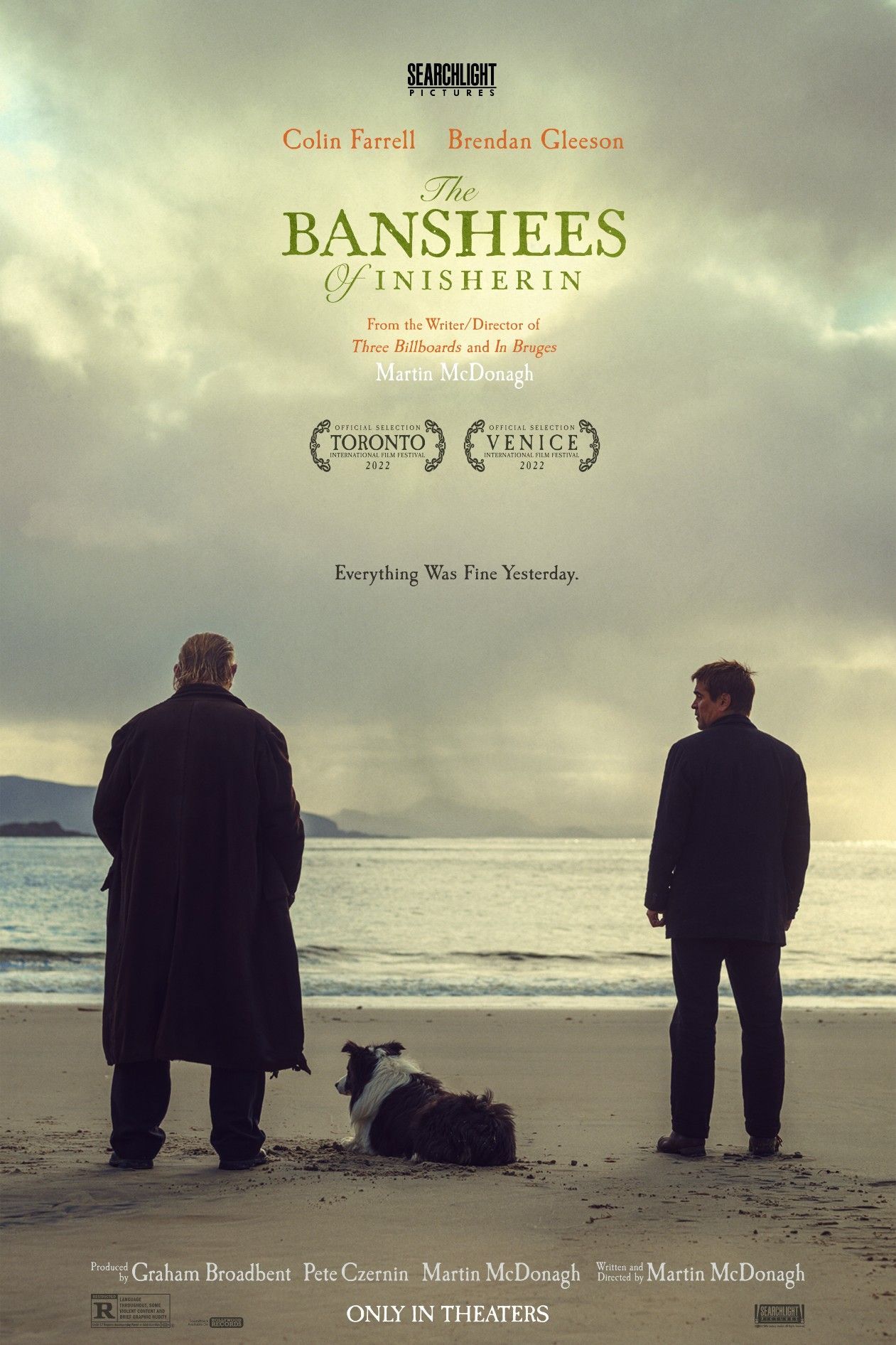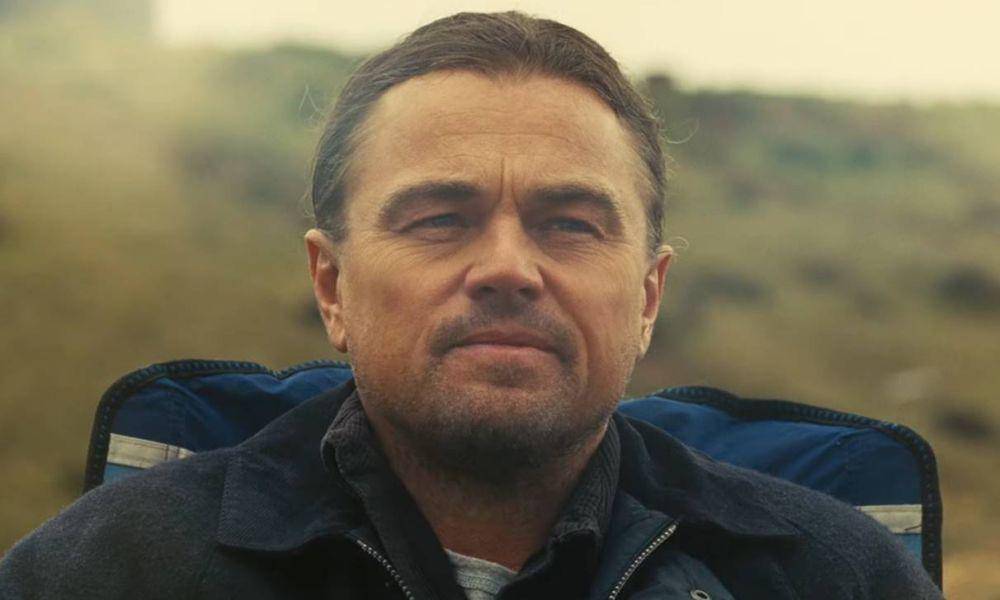The film The Banshees of Inisherin has garnered widespread attention for its compelling storytelling, rich visual tapestry, and profound thematic exploration. Set against the rugged, windswept landscapes of a remote Irish island, the film delves into complex human emotions and relationships, capturing both the beauty and melancholy of island life. Directed by Martin McDonagh, known for his sharp wit and nuanced character studies, the movie offers a blend of dark comedy and poignant drama. As audiences and critics alike engage with its layered narrative, The Banshees of Inisherin stands out as a significant work in contemporary cinema, inviting reflection on themes of friendship, loss, and the passage of time. This article provides a comprehensive overview of the film, examining its plot, cast, visual style, themes, and cultural context, along with its critical reception and artistic choices.
Overview of "The Banshees of Inisherin" and Its Plot
Set on the fictional Inisherin, a small Irish island, The Banshees of Inisherin centers around the sudden, inexplicable rift between two lifelong friends, Pádraic and Colm. Pádraic, a kindly and straightforward man, is devastated when Colm abruptly ends their friendship without explanation. As Colm seeks a more meaningful existence through his music and personal pursuits, Pádraic struggles to understand the change, leading to a series of escalating confrontations. The narrative explores the emotional toll of separation, the desire for connection, and the irrationality of human relationships. Intertwined with this central conflict are the islanders’ lives, their own secrets, and the haunting presence of local folklore, including the legendary banshee, symbolizing impending doom and grief. The film’s plot weaves humor and tragedy seamlessly, capturing the absurdity and profundity of small-town life and human vulnerability.
The story unfolds gradually, revealing the depths of the characters’ motivations and fears. Pádraic’s persistent attempts to reconcile with Colm highlight themes of loyalty and the pain of loss, while Colm’s introspective retreat underscores the desire for artistic and personal fulfillment at any cost. As tensions rise, the island’s quiet serenity is shattered, culminating in a series of dramatic and emotionally charged moments. The narrative ultimately probes whether forgiveness and understanding are possible amidst profound personal differences. Through its layered storytelling, the film examines how individual choices ripple through a community, affecting not just the protagonists but everyone around them.
The plot also emphasizes the stark contrast between the scenic beauty of Inisherin and the darker, often tragic undercurrents of the characters’ lives. The island becomes a character in itself, embodying isolation, resilience, and the inexorable passage of time. The narrative’s blend of humor, violence, and tenderness creates a balanced tone that keeps viewers engaged while prompting introspection. As the story concludes, questions about mortality, artistic integrity, and the human condition remain open, leaving a lasting impression on the audience. Overall, the plot of The Banshees of Inisherin is a nuanced exploration of friendship’s fragility and the universal quest for meaning.
Key Cast Members and Their Roles in the Film
The Banshees of Inisherin features a talented ensemble cast led by Colin Farrell and Brendan Gleeson, whose performances anchor the film’s emotional core. Colin Farrell portrays Pádraic, a gentle, affable man whose world is turned upside down by the sudden end of his friendship with Colm. Farrell’s portrayal captures the character’s innocence, vulnerability, and unwavering loyalty, eliciting empathy and understanding from viewers. Brendan Gleeson plays Colm, a complex individual seeking artistic fulfillment and personal solitude, whose enigmatic behavior sparks the film’s central conflict. Gleeson’s nuanced performance conveys both the internal struggles and the quiet dignity of a man grappling with change and regret.
Supporting roles are filled by a cast of talented Irish actors who bring authenticity and depth to the island’s community. Kerry Condon appears as Siobhan, Pádraic’s sister, whose pragmatic outlook and caring nature provide emotional grounding. She navigates her own dilemmas, balancing her desire for independence with familial loyalty. Barry Keoghan features as Dominic, a troubled young man whose interactions with the main characters add layers of tension and humor. The cast’s performances are complemented by the film’s evocative dialogue and subtle physical acting, which together create a believable and immersive world.
The film’s casting choices emphasize regional authenticity, with many actors hailing from Ireland and familiar with the cultural nuances portrayed. Their performances are marked by restraint and sincerity, aligning with McDonagh’s directorial style. The chemistry between Farrell and Gleeson, both seasoned actors, brings a palpable sense of history and emotional complexity to their characters’ interactions. The supporting cast’s portrayals enrich the narrative, providing contrasting perspectives and highlighting the diverse responses to the central conflict. Overall, the cast’s compelling performances are instrumental in conveying the film’s profound themes.
In addition to the main cast, the film features minor roles played by local residents, adding to the sense of community and realism. These characters, though not central to the plot, contribute to the film’s textured portrayal of island life. Their interactions with the protagonists subtly reflect broader social and cultural themes, such as tradition, change, and the passage of time. The ensemble’s collective talent elevates the film, making it a poignant exploration of human relationships set against a vividly realized Irish backdrop. The cast’s performances are a testament to the film’s focus on authentic storytelling and emotional truth.
Setting and Visual Style of the Inisherin Island
The setting of Inisherin is central to the film’s mood and narrative, capturing the stark beauty and isolation of a remote Irish island. The landscape is characterized by rugged cliffs, windswept beaches, and lush greenery, providing a breathtaking natural backdrop that emphasizes both serenity and desolation. The island’s geography plays a symbolic role, embodying themes of confinement, timelessness, and the inevitable passage of life. The visual environment reflects the characters’ emotional states—beautiful yet often harsh, mirroring their internal struggles and the film’s underlying tone of melancholy.
The filmmakers employ a naturalistic visual style that enhances the authenticity of the setting. Cinematographer Ben Davis captures the changing seasons, weather conditions, and lighting with meticulous attention, creating a textured and immersive experience. The use of wide shots showcases the expansive, untamed landscape, while intimate close-ups reveal the nuanced expressions of the characters. The film’s color palette is subdued, with earthy tones and soft lighting reinforcing the contemplative mood. This deliberate aesthetic choice immerses viewers in the quiet, contemplative atmosphere of Inisherin.
The island’s visual style also incorporates elements of Irish folklore and tradition, subtly woven into the cinematography and production design. The presence of folklore symbols, such as the banshee, is reflected in the landscape and atmospheric effects, reinforcing themes of death, mourning, and the supernatural. The film’s art direction emphasizes authenticity, with period-appropriate costumes, rustic interiors, and minimal modern elements, anchoring the story firmly in its cultural and geographical context. The visual style thus becomes a vital narrative tool, enhancing the emotional depth and thematic resonance of the film.
Lighting and weather play crucial roles in shaping the film’s aesthetic. Overcast skies and misty mornings evoke a sense of mystery and foreboding, while brighter, sunnier scenes offer moments of levity and hope. The dynamic interplay of light and shadow underscores the contrasts within the story—between hope and despair, community and solitude. The filmmakers’ careful attention to the natural environment creates a poetic, almost timeless quality that invites viewers to reflect on the enduring power of nature and tradition in shaping human experience. Overall, the setting and visual style are integral to the film’s emotional and thematic impact.
The visual approach of The Banshees of Inisherin underscores its status as a contemplative, character-driven piece. It celebrates the rugged beauty of Ireland’s landscape while using it to mirror the internal landscapes of its characters. The film’s aesthetic choices foster an intimate connection between viewers and the island’s world, inviting reflection on the universal themes of mortality, friendship, and change. The setting’s evocative power, combined with the film’s artistic style, elevates it beyond a simple story into a visual and emotional meditation on life’s fleeting nature.
Themes Explored in "The Banshees of Inisherin"
At its core, The Banshees of Inisherin explores profound themes of friendship, loneliness, and the human desire for meaning. The sudden rupture between Pádraic and Colm serves as a lens through which the film examines the fragility of relationships and the pain of loss. The characters’ struggles highlight how personal choices can lead to irreversible consequences, raising questions about forgiveness, pride, and the limits of understanding. The film delves into the emotional complexity of human bonds, emphasizing that even lifelong friendships can falter under the weight of individual aspirations and fears.
Another significant theme is the confrontation with mortality and the passage of time. The island setting, with its timeless landscape, underscores the inevitability of change and the transient nature of life. The presence of folklore elements, such as the banshee, symbolizes impending death and mourning, reinforcing the idea that life’s impermanence is an inescapable truth. The characters’ introspections and decisions reflect a universal human concern with mortality, prompting viewers to consider their own relationships and the legacy they wish to leave behind.
The film also explores themes of artistic pursuit and personal fulfillment. Colm’s desire to create music and leave a meaningful mark contrasts with Pádraic’s simple, loyal nature. This tension raises questions about the sacrifices involved in pursuing one’s passions and whether personal ambition can coexist with community and friendship. The narrative suggests that the search for individual purpose can lead to sacrifice and alienation, prompting reflection on the balance between self-identity and social bonds.
Isolation versus community is another recurring theme, vividly depicted




